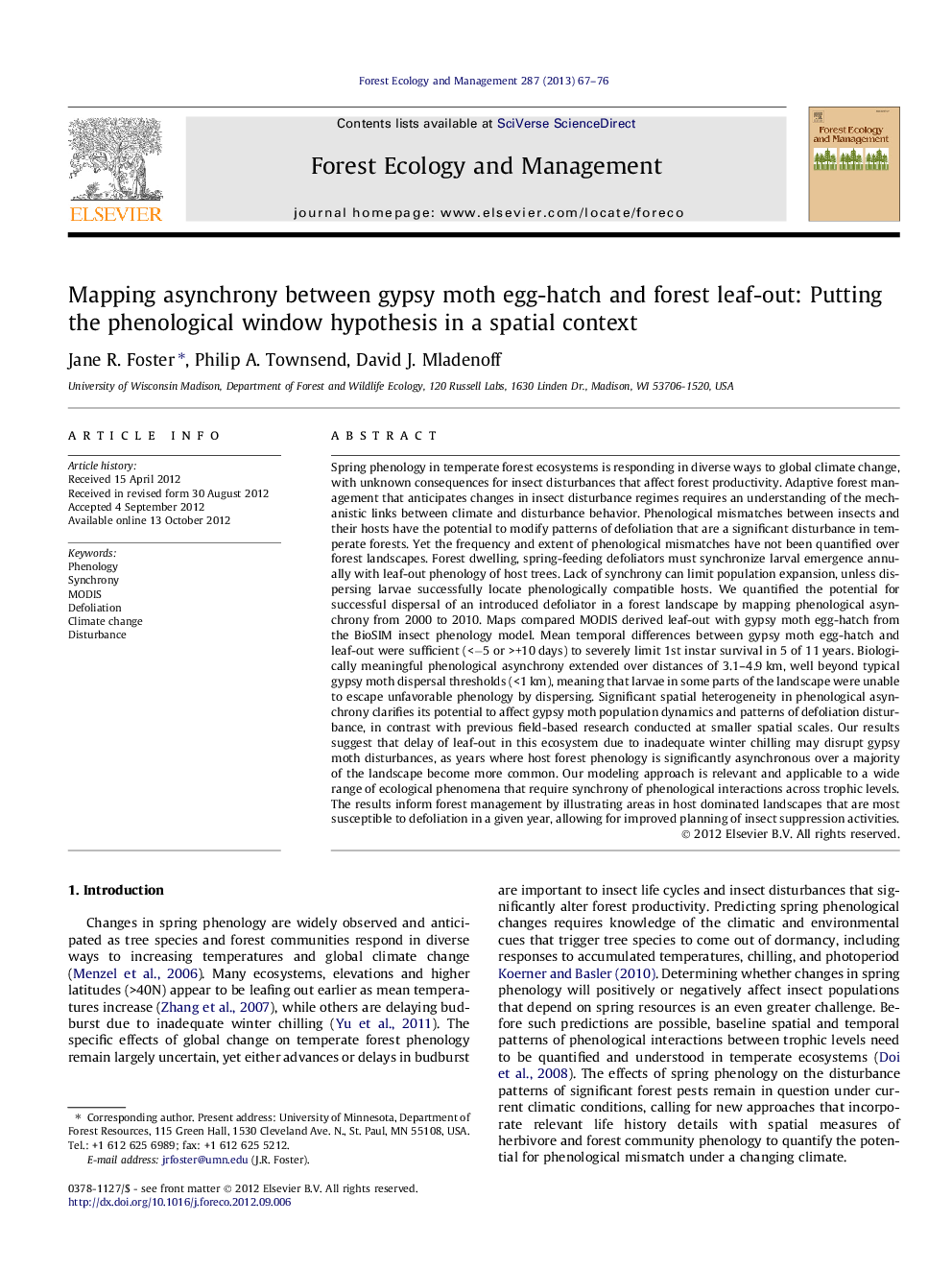| کد مقاله | کد نشریه | سال انتشار | مقاله انگلیسی | نسخه تمام متن |
|---|---|---|---|---|
| 87295 | 159243 | 2013 | 10 صفحه PDF | دانلود رایگان |

Spring phenology in temperate forest ecosystems is responding in diverse ways to global climate change, with unknown consequences for insect disturbances that affect forest productivity. Adaptive forest management that anticipates changes in insect disturbance regimes requires an understanding of the mechanistic links between climate and disturbance behavior. Phenological mismatches between insects and their hosts have the potential to modify patterns of defoliation that are a significant disturbance in temperate forests. Yet the frequency and extent of phenological mismatches have not been quantified over forest landscapes. Forest dwelling, spring-feeding defoliators must synchronize larval emergence annually with leaf-out phenology of host trees. Lack of synchrony can limit population expansion, unless dispersing larvae successfully locate phenologically compatible hosts. We quantified the potential for successful dispersal of an introduced defoliator in a forest landscape by mapping phenological asynchrony from 2000 to 2010. Maps compared MODIS derived leaf-out with gypsy moth egg-hatch from the BioSIM insect phenology model. Mean temporal differences between gypsy moth egg-hatch and leaf-out were sufficient (<−5 or >+10 days) to severely limit 1st instar survival in 5 of 11 years. Biologically meaningful phenological asynchrony extended over distances of 3.1–4.9 km, well beyond typical gypsy moth dispersal thresholds (<1 km), meaning that larvae in some parts of the landscape were unable to escape unfavorable phenology by dispersing. Significant spatial heterogeneity in phenological asynchrony clarifies its potential to affect gypsy moth population dynamics and patterns of defoliation disturbance, in contrast with previous field-based research conducted at smaller spatial scales. Our results suggest that delay of leaf-out in this ecosystem due to inadequate winter chilling may disrupt gypsy moth disturbances, as years where host forest phenology is significantly asynchronous over a majority of the landscape become more common. Our modeling approach is relevant and applicable to a wide range of ecological phenomena that require synchrony of phenological interactions across trophic levels. The results inform forest management by illustrating areas in host dominated landscapes that are most susceptible to defoliation in a given year, allowing for improved planning of insect suppression activities.
► We map phenological asynchrony between gypsy moth and host forests from 2000 to 2010.
► Mean asynchrony was great enough to affect dispersal in 5 of 11 years.
► Defoliation in 2000 and 2001 decreased as asynchrony increased, as expected.
► Climate change may interact with asynchrony and disturbance in unexpected ways.
Journal: Forest Ecology and Management - Volume 287, 1 January 2013, Pages 67–76